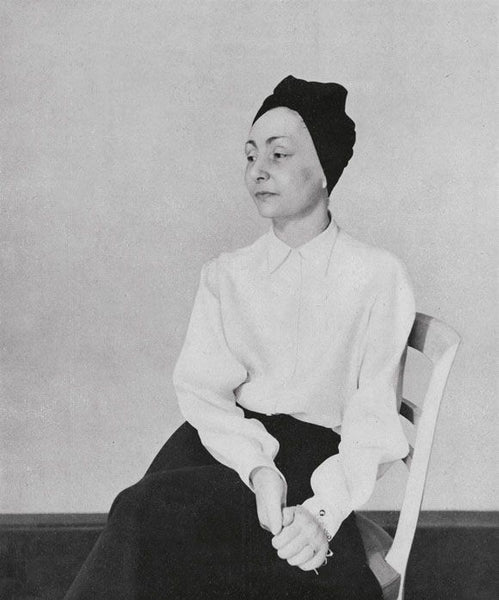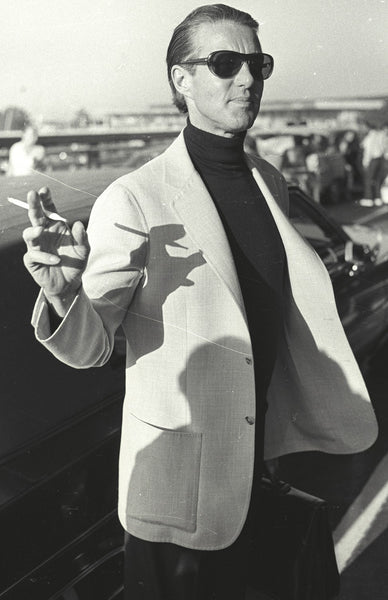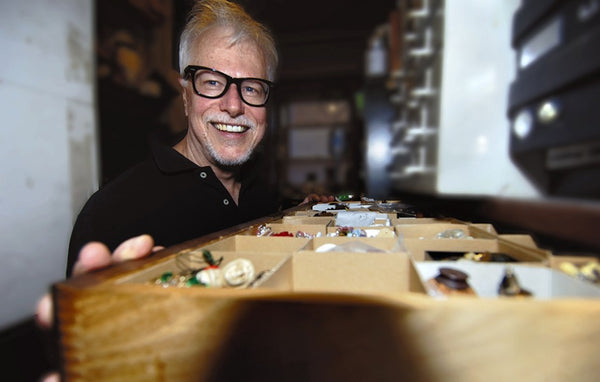Designer Spotlight: Rudi Gernreich

Born in Vienna, Austria, Rudolf “Rudi” Gernreich developed his love for high fashion from his aunt, Hedwig Müller, who owned a dress shop. At the age of eight, after his father -a stocking manufacturer who had served in World War I- committed suicide, Gernreich began spending more time at his aunt’s shop, learning about fabrics, the dress trade, and sketching her designs for the Viennese elite. After having seen his sketches, Austrian designer Ladislaus Zcettel offered a 12-year-old Gernreich a fashion apprenticeship in London, but his mother, Elisabeth, refused as Gernreich was still very young.
In 1938 Gernreich and his mother immigrated to Los Angeles as Jewish refugees fleeing the German Anschluss. Life was difficult, and for a time the family subsisted on pastries Elizabeth baked and Rudi sold door to door. Gernreich’s first job was preparing cadavers for autopsy; although the job was grim, Gernreich claimed it gave him an opportunity to study anatomy, “I do smile sometimes when people tell me my clothes are so body-conscious I must have studied anatomy. You bet I studied anatomy.”
Inspired by modern dancer Martha Graham, Gernreich joined the Leslie Horton Modern Dance Troupe from 1942 to 1948. Dance provided Gernreich with an understanding of motion and how clothing moved with the body. Gernreich became a costume designer, eventually becoming a freelance designer. Gernreich worked for dress manufacturers in California and New York, where he was expected to base his designs off of the already-popular “New Look.” Gernreich subverted expectations of a feminine nipped-waist look when he presented his avant grade, mod designs. Gernreich established his own company in 1960, and also began designing dramatic ready-to-wear sportswear and casual knitwear pieces for Harmon Knitwear
Although high-end, Gernreich created works that were youthful and fun, showcasing his strong understanding of shape, color, form, and the human body. His designs sought to liberate the female form from structured fashion, and to challenge reigning beauty and gender norms. Gernreich spearheaded the mod minidress movement, and among his most scandalous designs are bathing suits with cutouts, topless nightgowns and dresses, thong bikinis, body decals, dresses with vinyl cutouts, and androgynous pantsuits. Gernreich also designed the iconic “monokini” and the “no-bra” bra that was the antithesis of the structured bras that dominated the 1960s, lead the “Total Look” movement that involved a fully-matching outfit, including shoes, coat, hat, and undergarments, all in optical art inspired prints, and produced a conceptual collection in 1970, featuring reveling yet utilitarian unisex clothing that was meant to represent Gernreich’s vision of the future of fashion. Gernreich even produced the clothing in the very first fashion video, “Basic Black: William Claxton w/ Peggy Moffitt.”
In 1967, Time magazine declared Gernreich to be “the most way-out, far-ahead designer in the U.S.,” and with his innovative, experimental, adventurous designs, it would be difficult to deny that Rudi Gernreich was a designer ahead of his time.
Also in Adore MRS. Couture

Designer Spotlight: Madame Gres

Designer Spotlight: Roy Halston Frowick
Halston was thrown into the limelight when Jacqueline Kennedy wore his pillbox hat to John F. Kennedy’s inauguration. Soon Halston expanded into women’s wear, creating both couture and ready-to-wear fashion catering to the fashionable and elite jet set. Halston also accepted the honor of designing the 1976 US Olympic team uniforms, redesigned Braniff Airlines’ uniforms in 1977, and created uniforms for the New York Police Department and the Girl Scouts in 1978.
Halston was innovative, using slinky knit material and ultrasuedes, and introducing a halter dress design that elongated a wearer’s silhouette. He pioneered the sensual and soft draped looks associated with disco and his beloved Studio 54.

